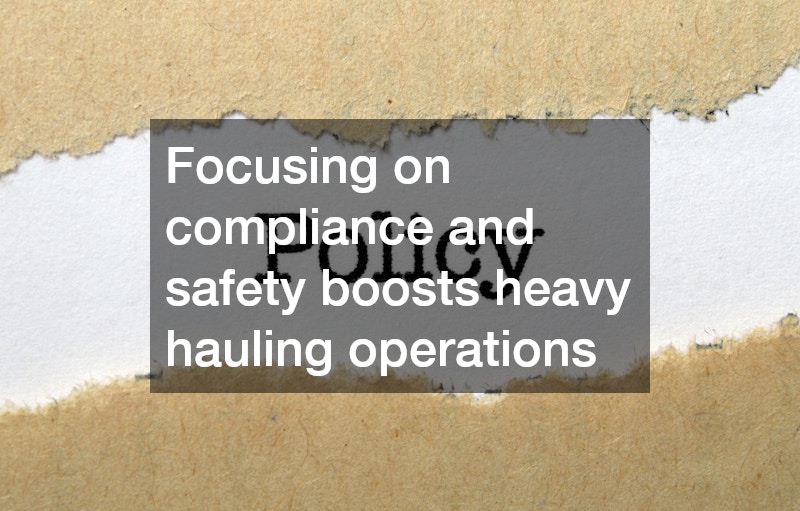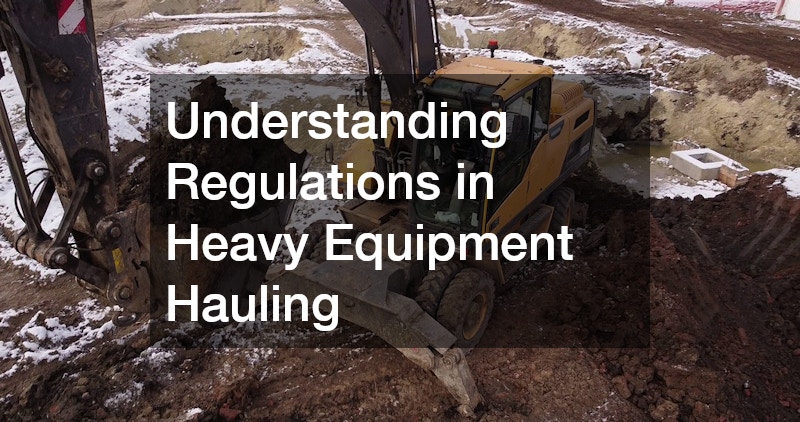The field of heavy equipment hauling is rife with challenges and complexities that must be navigated through a comprehensive understanding of regulations. Ensuring safety, enhancing efficiency, and maintaining compliance with legal requirements are crucial aspects that depend heavily on the deep understanding and correct application of regulations.
Heavy equipment hauling regulations are not just suggestions but legal mandates that affect every aspect of transportation. From securing the right permits to adhering to strict safety codes, the regulatory framework ensures that operations are conducted lawfully and with minimal risk.
Inadequate understanding or negligence of these regulations can lead to severe consequences, including legal penalties and operational downtimes. This article seeks to demystify these regulations, shedding light on the essential requirements and best practices for compliance and safe operations.
1. What Permits are Required for Heavy Equipment Hauling?
a. Types of Permits
Obtaining the correct permits is a foundational step in heavy equipment hauling, with oversized and overweight permits being the most commonly required. These permits ensure that your load is within legal limits, safeguarding public safety and infrastructure.
Beyond general permits, state-specific requirements may dictate unique regulations that must be adhered to for operations within state lines. It’s crucial to understand both federal and state-level requirements, as they can significantly alter the transportation strategy.
For instance, some states require additional documentation or applications for extraordinary loads, especially if they exceed specific weight or dimension thresholds. Staying informed on these requirements keeps your operations running smoothly without legal interruptions.
b. How to Apply for Permits
The process of applying for hauling permits has been streamlined with the advent of online systems, making it more efficient than traditional methods. However, understanding the intricacies of each system and the documentation required remains essential for seamless applications.
While online applications are common, they often require precise information about the load, the route, and the vehicle specifications. Familiarizing yourself with these systems ahead of time can lead to faster permit acquisition and reduce potential errors in the application.
Documentation such as proof of insurance, vehicle registration, and driver qualifications are typical prerequisite during the application process. Ensuring all paperwork is in order and accurately submitted can often be a determining factor in the speed and success of permit approval.
2. What are the Safety Regulations for Heavy Equipment Hauling?
a. Securing Loads Properly
Properly securing loads is a critical component of safety regulations in heavy equipment hauling. Legal requirements often mandate specific types of tie-downs and securement techniques to prevent load shifts during transport.
Failing to comply with these regulations not only increases the risk of accidents but also leads to fines and restrictions on operations. Therefore, it is imperative for companies involved in heavy hauling to regularly train their personnel in load securement techniques and legal standards.
These regulations are designed with the primary goal of public and driver safety, thus ensuring the heavy equipment remains stable and stationary throughout its journey. Regular audits and checks help in maintaining compliance with these safety standards.
b. Vehicle and Equipment Requirements
Vehicles used for heavy equipment hauling must meet stringent safety standards to be legally operable on roads and highways. These standards ensure the vehicle can handle the load’s physical demands and contribute to overall road safety.
Routine maintenance checks and adherence to manufacturer guidelines for load capacity and vehicle operation are fundamental in avoiding equipment failure and ensuring compliance. By regularly updating and reviewing vehicle requirements, companies can maintain high safety standards and efficient operations.
Furthermore, drivers and operators are required to have specialized training and licenses that validate their capability to operate heavy haul vehicles. Ensuring all personnel are qualified and vehicles meet the required standards helps prevent legal infractions and enhance safety on the road.
3. How Do State-Specific Regulations Affect Heavy Equipment Hauling?
a. Navigating Different State Laws
The varying laws concerning heavy equipment hauling across different states are perhaps one of the most challenging factors to navigate. Each state possesses specific laws that can affect your plans for transit, necessitating thorough research and adaptation for each journey.
Transporting equipment across state lines requires an acute awareness of these differences to avoid legal complications and delays in delivery. Failure to comply with state-specific requirements can result in fines or, worse, the halting of hauling operations altogether.
Using route planning software that accounts for state laws and regulations can streamline this process, ensuring that haulers are prepared for any changes or additional requirements they may face over the course of their journey.
b. Tips for Compliance Across States
Maintaining compliance across multiple states during heavy equipment hauling operations is a continual process of education and technological adaptation. Utilizing up-to-date mapping and coordination tools can provide real-time updates and help anticipate state regulations ahead of time.
By investing in technology and maintaining a database of regulations, businesses can streamline their operations and keep informed about the latest changes in the law. This reduces the likelihood of non-compliance and enhances coordination across all states of operation.
Developing strong relationships with regulatory bodies and staying plugged into industry groups can also provide insights and updates, reinforcing a company’s ability to adapt efficiently to regulatory changes and maintain compliance across its operations.
The regulations governing heavy equipment hauling are essential for ensuring safety, efficiency, and legal compliance in the industry. Understanding these regulations is critical to avoiding legal pitfalls and unforeseen challenges during operations.
The landscape of heavy equipment hauling regulations is vast and often complex, with permits, safety standards, and state-specific laws all demanding close attention. However, diligent preparation and ongoing education offer the means to navigate this complexity effectively.
By placing a premium on compliance and safety, businesses involved in heavy hauling not only adhere to regulations but also enhance their operational standards. Staying informed about regulatory changes and leveraging technology can be instrumental in fostering a culture of safety and efficiency in the industry.





